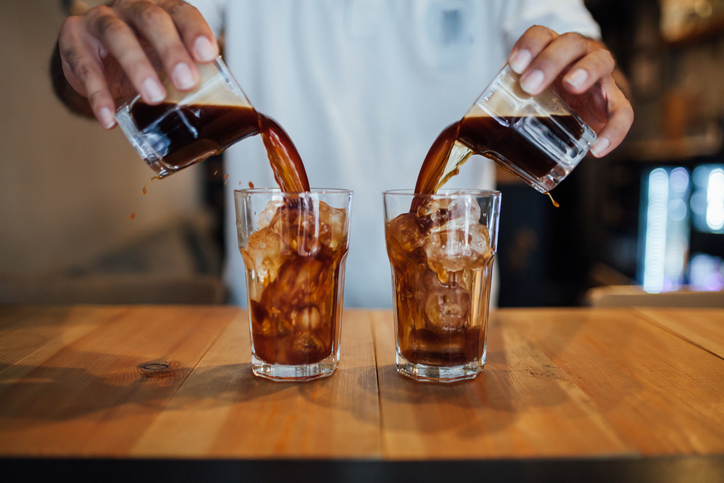Perfecting Cold Brew Coffee
10 mai 2021

Scientists investigate the effects of coffee particle size, water temperature and infusion time on the chemical composition of cold brew beverages.
Every day around 2.25 billion cups of coffee are consumed around the world. The drink’s popularity comes from the stimulating effects of caffeine, as well as its taste, aroma and potential health benefits. The two main commercial coffee bean species are Coffea arabica (Arabica coffee) and Coffea canephora (Robusta coffee).
Coffee beverages are usually drunk hot and are prepared by different brewing methods depending on the social, cultural and geographical context of the region. Most extraction methods involve using high-temperature water. But recently, cold brewing is gaining in popularity.
Sweeter and Smoother
Cold brew coffee can be prepared either by indirect contact – by dripping – or directly, by immersion, where the coffee remains in contact with the water. The cold extraction process brings out fewer bitter compounds, producing a sweeter and smoother beverage. As a result, cold brews tend to taste more flavourful, less acidic and less bitter compared to those made by traditional methods.
While there has been extensive research into hot extraction methods, data on cold brewing is scarce. Currently, little is known about the influence of coffee species and brewing conditions on the composition and characteristics of cold brew beverages. In a new study, researchers evaluate the effect of coffee particle size, water temperature and infusion time, on the composition of cold brews made from Arabica and Robusta coffees.1
Applying Science to Cold Brewing
The researchers made coarser or finer coffee grinds from roasted Arabica or Robusta coffee beans. They then carried out various tests to analyse the resulting brews from direct immersion at 5 and 15oC for up to 25 hours – examining their bioactive compound content, acidity, total soluble solids and antioxidant activity.
The extraction behaviour was distinct between Arabica and Robusta grinds, mainly considering the effect of coffee particle size. Arabica cold brews generally had a lower content of chlorogenic acids and caffeine and lower antioxidant activity compared to Robusta cold brews, regardless of the coffee particle size or infusion temperature used. The main extraction of compounds occurred in the first 3 to 5 hours of infusion.
The researchers used water generated from an ELGA PURELAB® laboratory water purification system to prepare standards and solutions for their experiments, minimising the risk of adding contaminants that may affect their results.
Grind Size is a Key Factor
This research shows that certain cold brew characteristics are influenced by coffee particle size, water temperature and infusion time, with differences between Arabica and Robusta coffees. In general, to achieve cold brews with higher extraction of bioactive compounds and higher antioxidant activity and acidity, the use of low water temperatures and coarser grind coffee should be avoided.
These results offer new insight for future investigations into cold brew coffee, which is rapidly growing in popularity within the coffee industry.
Why Choose ELGA LabWater?
At ELGA LabWater, our expert engineers, chemists and scientists are at the forefront of technological innovation. They continue to introduce game-changing features to the lab water market.
Reference:
- Da Silva Portela, C. et al. Brewing conditions impact on the composition and characteristics of cold brew Arabica and Robusta coffee beverages. LWT – Food Science and Technology 2021;143;111090
Dr Alison Halliday
After completing an undergraduate degree in Biochemistry & Genetics at Sheffield University, Alison was awarded a PhD in Human Molecular Genetics at the University of Newcastle. She carried out five years as a Senior Postdoctoral Research Fellow at UCL, investigating the genes involved in childhood obesity syndrome. Moving into science communications, she spent ten years at Cancer Research UK engaging the public about the charity’s work. She now specialises in writing about research across the life sciences, medicine and health.
